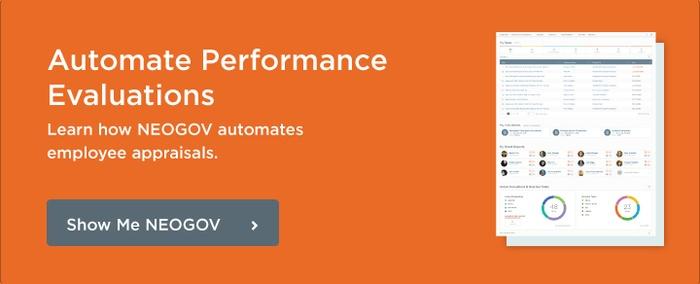There has been a lot of press about companies in the private sector replacing the annual appraisal with more frequent feedback. The same desire for change exists in the public sector. Employees and managers alike want public sector performance management to be a continuous process, not a once a year event. However, wanting to change is not enough, managers need practical tips on how to build a continuous performance management process into their day-to-day work. Here are two tips you can share with your leadership team.
Deliberate Documentation
One pillar of a good performance management process is being deliberate in documenting employee behaviors—good and bad. Documenting doesn’t mean filling in a form. It just means saving an email or a report or a quick note to a “performance notes” folder. For example, if an employee has just sent an email about a tricky problem they sorted out, then that can be saved to the “performance notes” folder.
TWEET: 1 pillar of good performance management is being deliberate in documenting employee behaviors
The performance notes folder serves two purposes. At the very least it creates a solid archive of information so that when it comes to advising or appraising an employee, the manager isn’t relying on memory alone. The more important purpose is that the act of filing the information on the computer simultaneously files it in the manager’s mind. They are now primed to give useful performance feedback next time they meet the employee.
This deliberate documentation is easy and fast. All it takes is some discipline on the part of the manager. HR can promote this in a soft way (here’s a good idea that will improve performance) or in a hard way where having “performance notes” files for each employee is part of the documentation all managers are expected to keep.
To do this well, warn managers of confirmation bias. If a person has a preconceived notion about an employee, then they are likely to notice facts that confirm what they already believe and ignore facts to the contrary. Managers need to actively counter this cognitive bias by regularly filing anything relevant to performance, not judging a fact by whether or not it proves a point they want to make.
Meaningful Meetings
The second tip to help you move to a continuous performance management process is have brief, frequent, meaningful meetings with employees. Each of those three adjectives matters, and this takes a little bit more work than deliberate documentation does. The easy part is “brief.” Your busy managers will be happy to hear brevity is part of HR’s plan. Frequent is easier once we’ve agreed on brief, but a manager still has to arrange their schedule to make it happen. Many managers will make these meetings happen, but HR needs to look out for all employees, not just the ones who happen to have well-organized managers. This means there needs to be some mechanism (such as a pulse survey or skip level meeting) to identify managers who are struggling to fit brief frequent meetings with employees into their work.
Alright, so far so good, but we’ve saved the most difficult issue for last: How do you make those brief frequent meetings meaningful? Managers need some simple reusable formulas to lead these conversations. For example, one useful formula to teach managers is “One specific thing you did well in (the situation) is ___________. One specific thing you could do better is to ____________.” This formula is simple, it reminds managers they need to be specific and it balances what is going well and what could be even better. A good source for more formulas is “The Coaching Habit” by Michael Bungay Stanier.
Time to get started
Both “deliberate documentation” and “meaningful meetings” are straightforward, low cost, and will fit with whatever performance management system you are using. It demonstrates how HR can add value for both employees and managers without creating a lot of extra work for people. If we want continuous performance management, it has to be simple and fast. These two tips will help you succeed.
